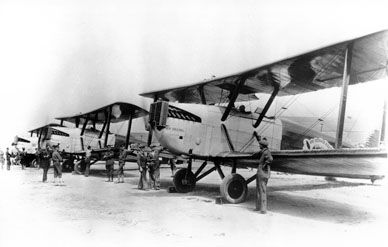Moments and Milestones: The Greatest Great Circle
Moments and Milestones: The Greatest Great Circle
FLYING AROUND THE WORLD IS not an undertaking that most pilots are likely to attempt, but the Fédération Aéronautique Internationale is hoping a new Circumnavigator Badge will stimulate greater interest in the feat. The people who have accomplished an around-the-world flight in recent years (more than once in some cases) have their own Web site—Angela Pedersen and Trevor Sherwood as they made their way eastward around the globe in a 1965 Mooney M20E.
The first circumnavigation of the globe was made by the U.S. Army Air Service. Four Douglas World Cruisers departed Seattle, Washington, in April 1924. Only two aircraft survived the 27,553-mile trip, completed almost six months later. The most well-known circumnavigation is that of Dick Rutan and Jeana Yeager, who in 1986 took off from California’s Edwards Air Force Base in the homebuilt Voyager and returned nine days later, having flown around the world nonstop and unrefueled.
The FAI Circumnavigator Badge can be earned by any pilot with at least a private certificate who circles Earth along an eastbound, westbound, or polar route, as defined by FAI rules. The flight may be nonstop or broken into segments, and may be flown solo or with crew members. Some restrictions:
•The same aircraft must be used for the entire flight. Engines and other components can be replaced if necessary, but the basic airframe (wings and fuselage) cannot be altered.
•All applicants must be aboard the aircraft for the entire flight (though not necessarily at the controls).
•The aircraft must be flown under its own power for the entire flight.
•The pilot must return to within 400 kilometers (approximately 250 miles) of his or her starting point.
•The flight must be completed within 365 days.
•Pilots must hold an FAI Sporting License.
Pilots flying east or west must travel at least 27,000 kilometers (16,777 miles) and cross all meridians. Pilots flying a polar route must travel at least 34,000 kilometers (21,127 miles) and cross the equator at two points separated by at least 90 degrees.
—Stuart Nixon
